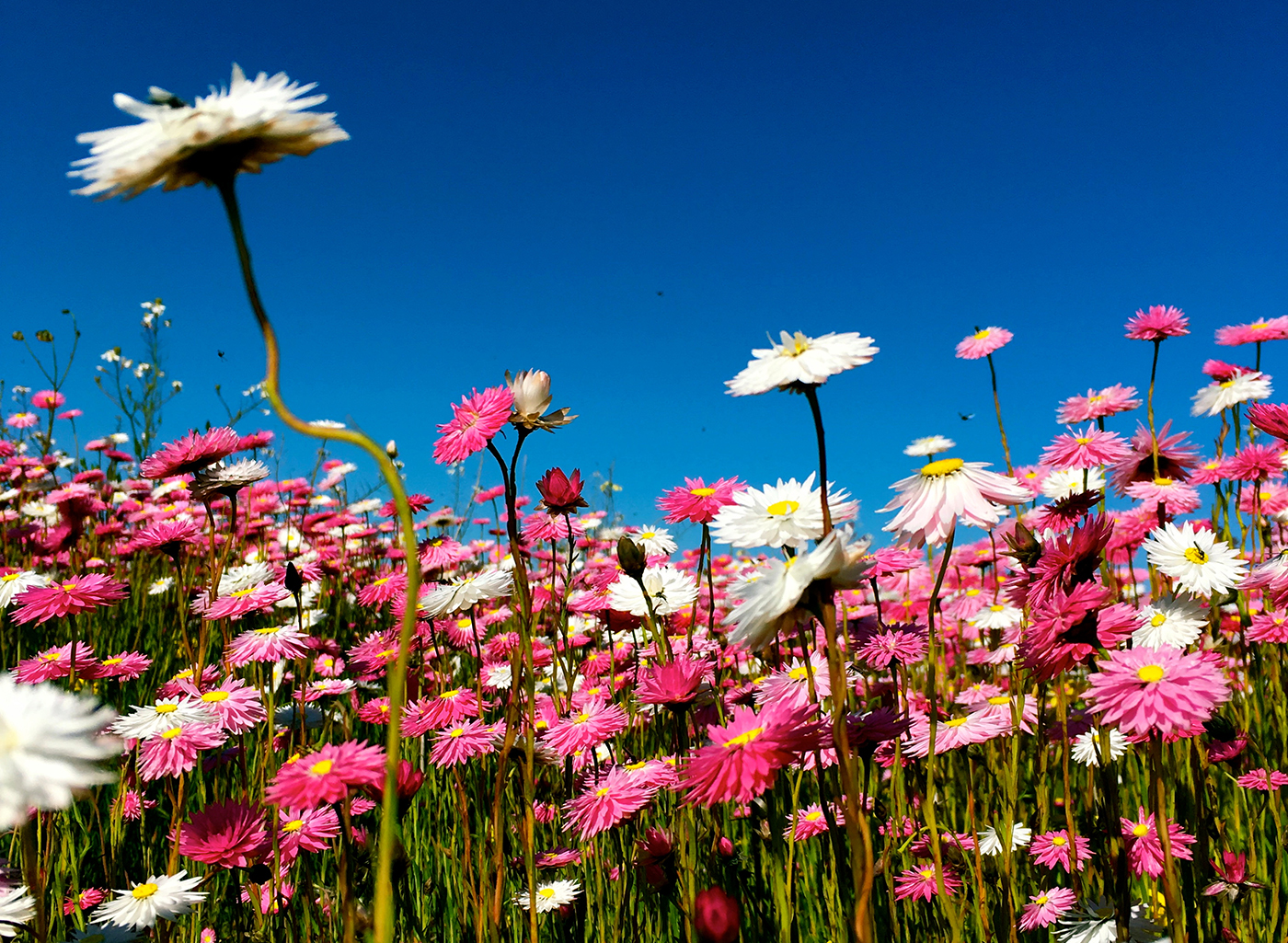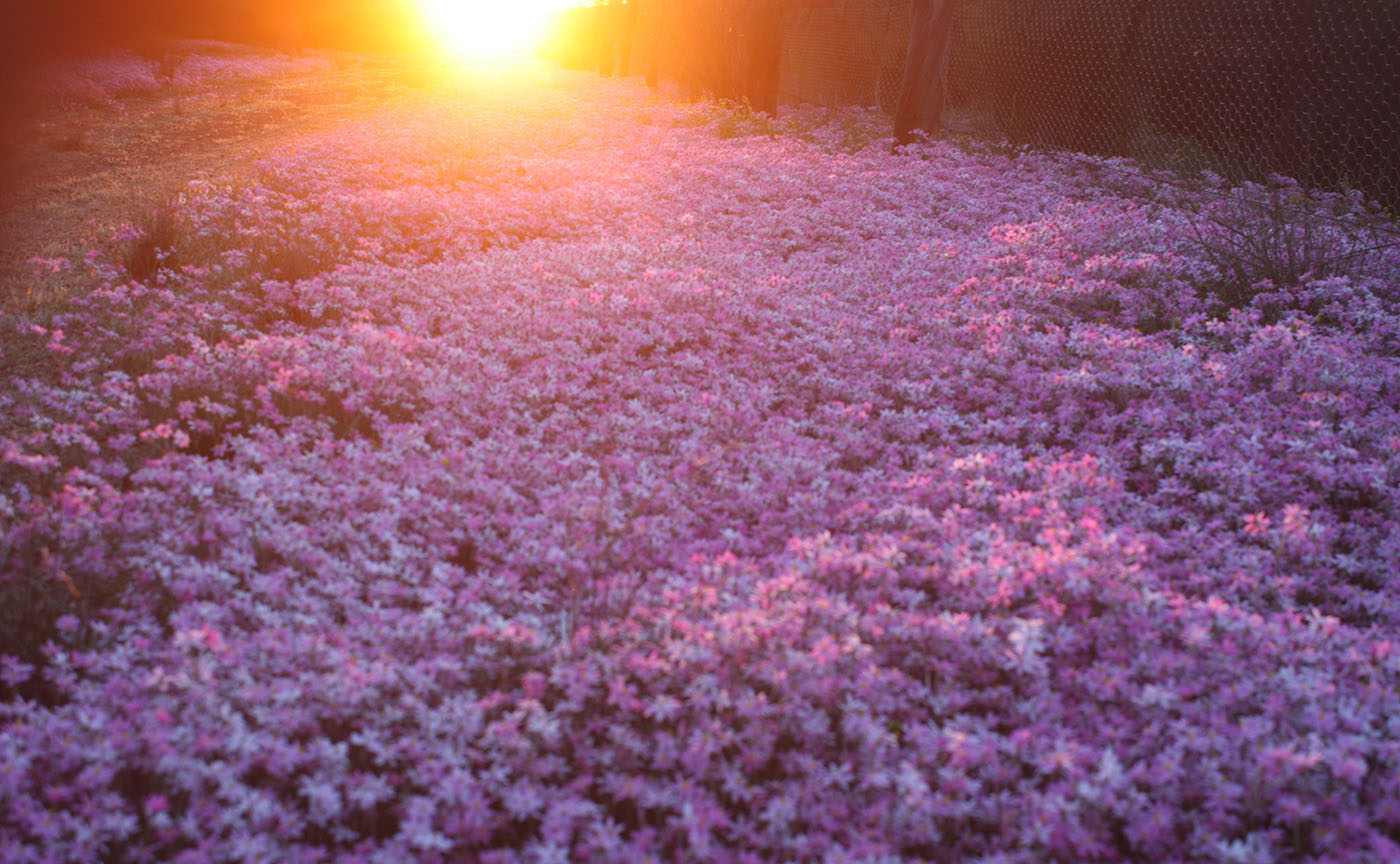Everlastings
Everlastings
Scientific Name: Rhodanthe chlorocephala
Rhodanthe derived from Greek Rhodon meaning “rose” and anthos meaning “a flower”. Chlorocephala derived from Greek chloro meaning “green” and cephale meaning “a head”. Commonly known as the Everlasting, Rosy Sunray, Pink Paper-daisy and Rosy Everlasting.

Description: A native Australian daisy belonging to the family Asteraceae. It is hardy, adaptable and provides a good, fast ground cover. The flowers are long-lived and dry well. An erect annual herb 20-60cm high with clumps of glabrous (hairless) grey-green stems and leaves 1-6cm in length. Everlastings have a large single flowering head at the tip of each stem. Flower heads grow to 6cm diameter, gradually decreasing as the flowering season progresses. The color of the bracts varies from deep pink (almost red) through pale pink to pure white, with a yellow or black centre.
Distribution: The Everlasting grows naturally in the south of Western Australia extending into South Australia.
Ecology: The brightly coloured bracts act as petals to attract insects such as hoverflies, native bees, and small beetles that pollinate the florets. Grasshoppers also visit the flower heads. The tiny fruits are dispersed by wind, and germinate and grow after fire or on disturbed ground. It is adaptable and ephemeral, springing up whenever conditions are right e.g. during warm, sunny weeks anytime of the year. It prefers full sun to dappled shade and grows well in open woodland. It thrives in well-drained sandy soils and tends to be smaller when grown in heavy, clay soils. Plants face a number of predators including Rutherglen bugs, kangaroos, rabbits, slugs, snails and aphids.
